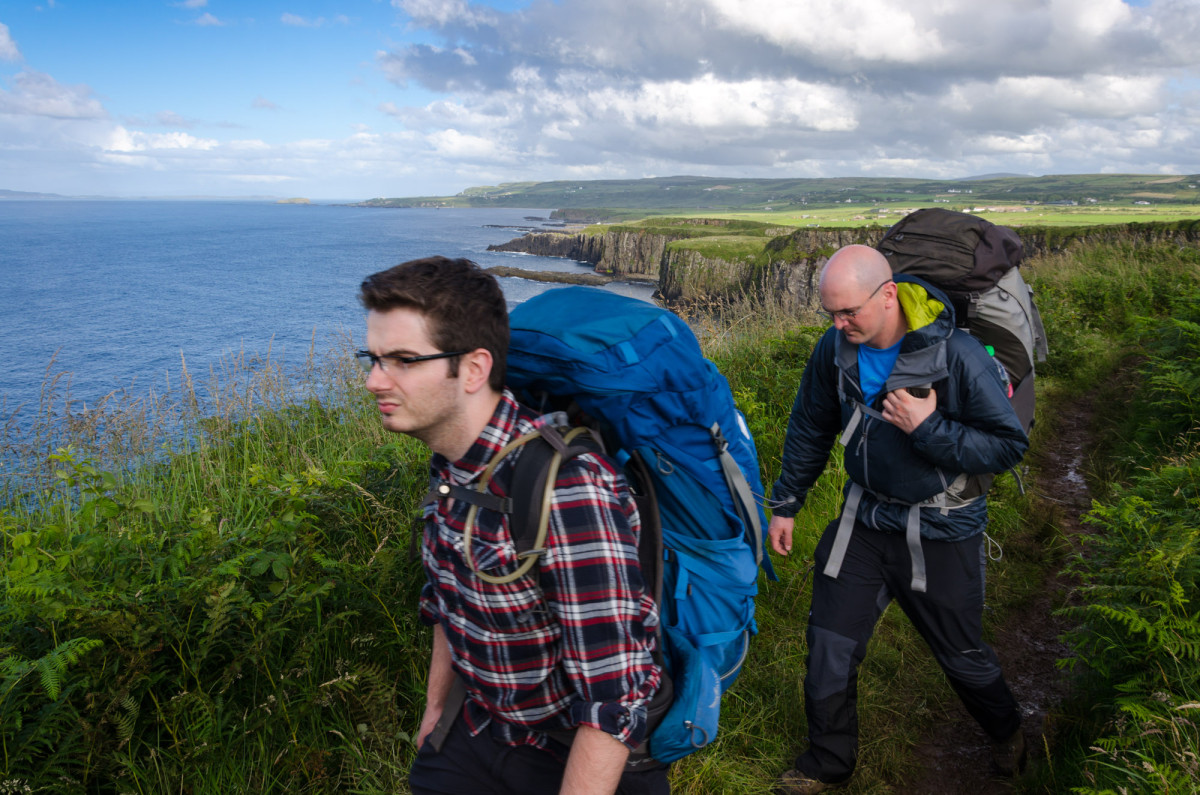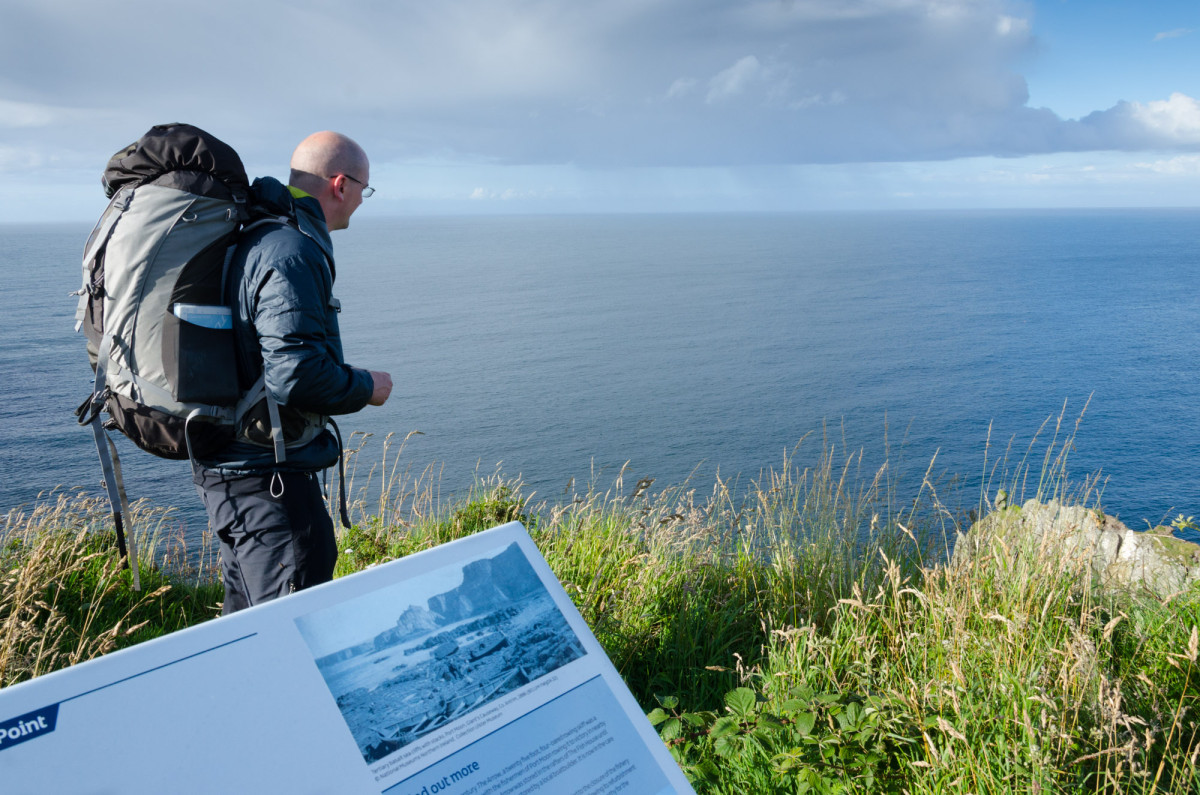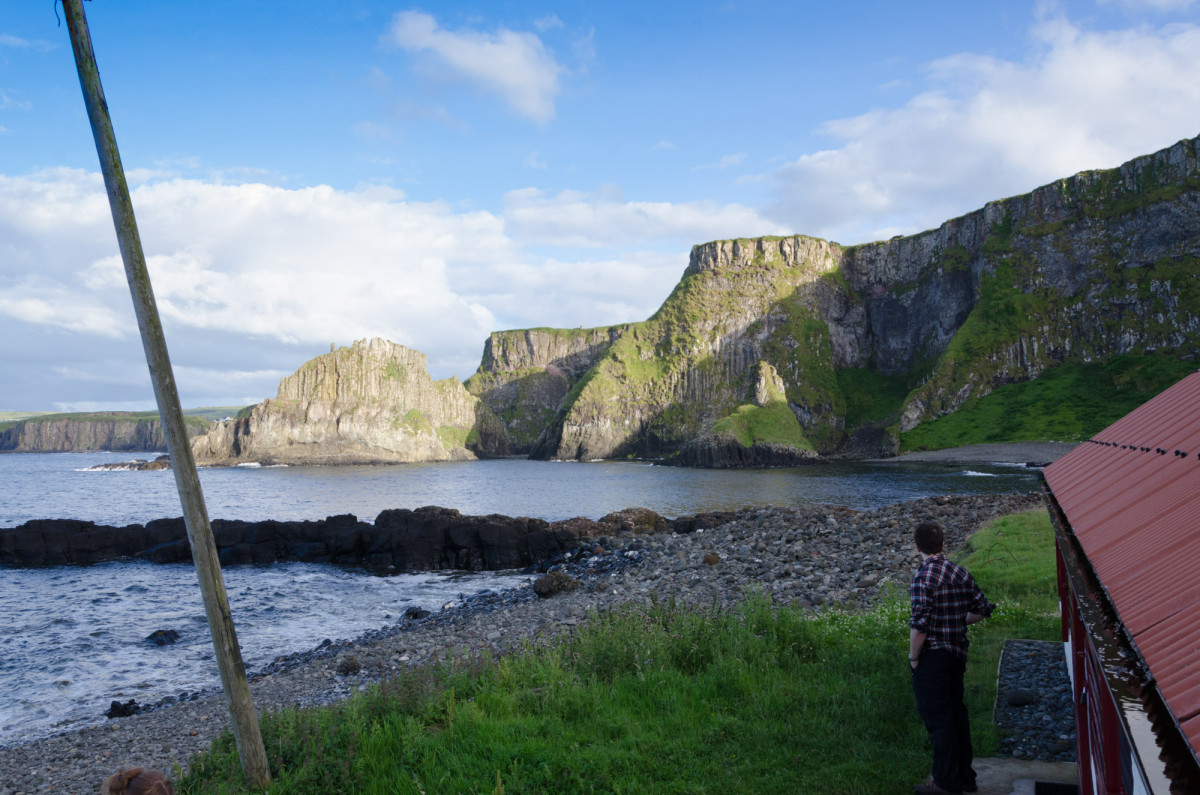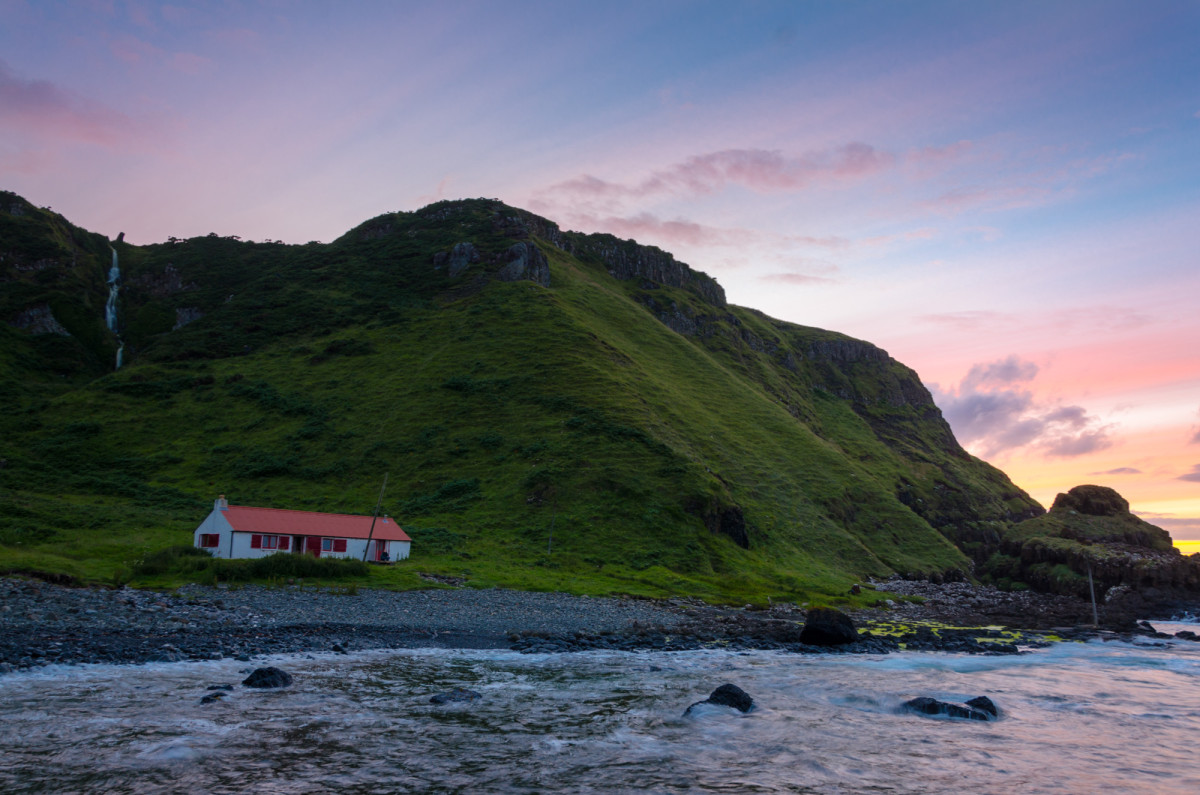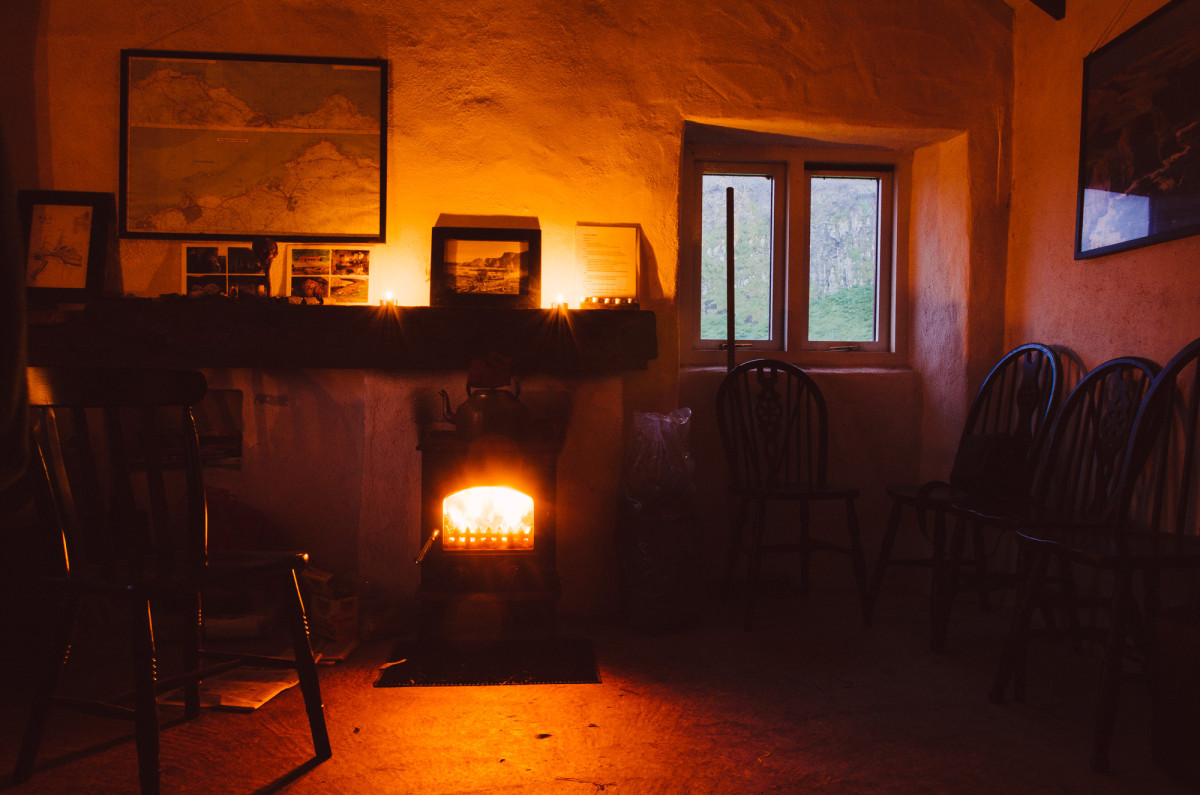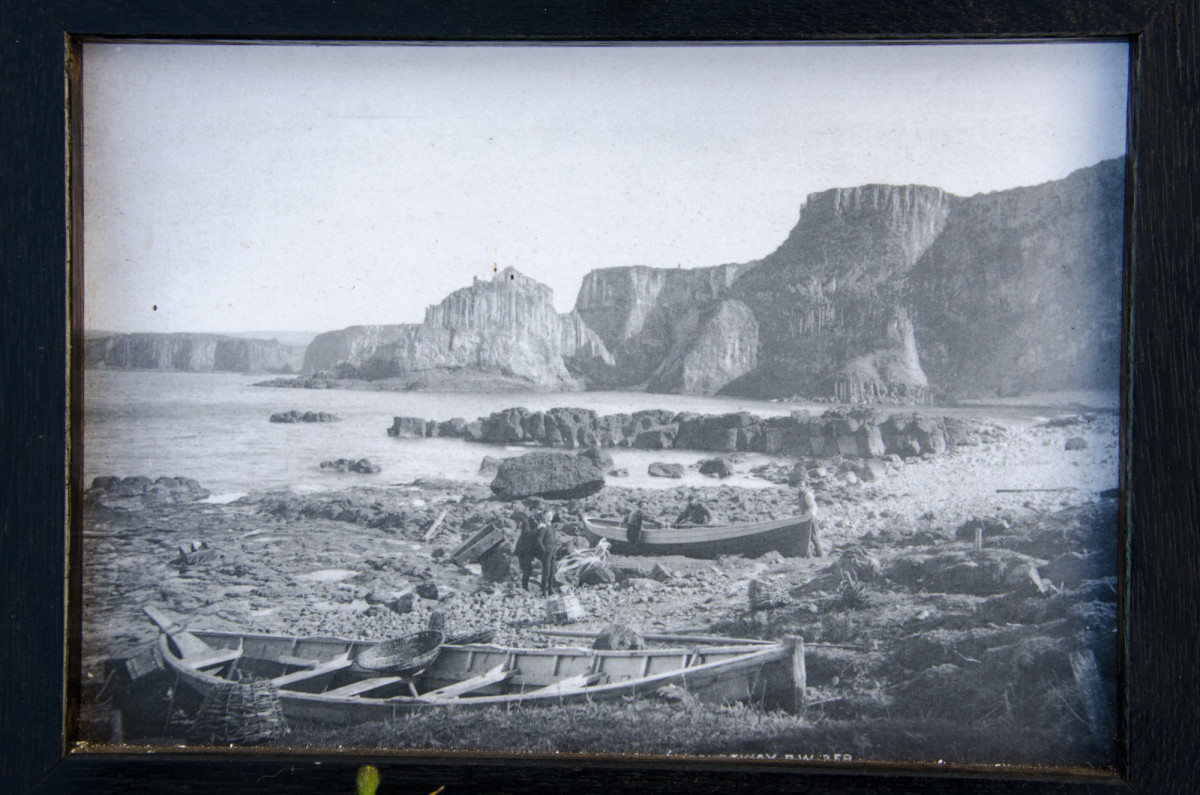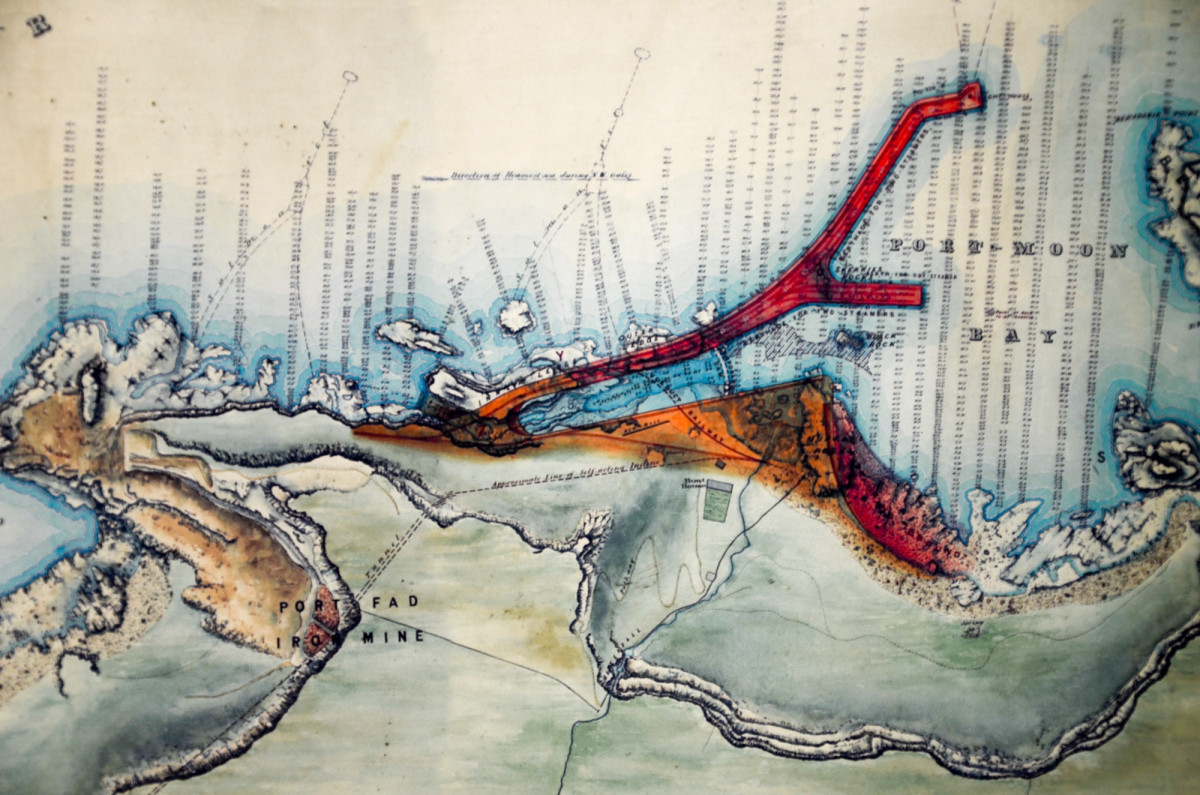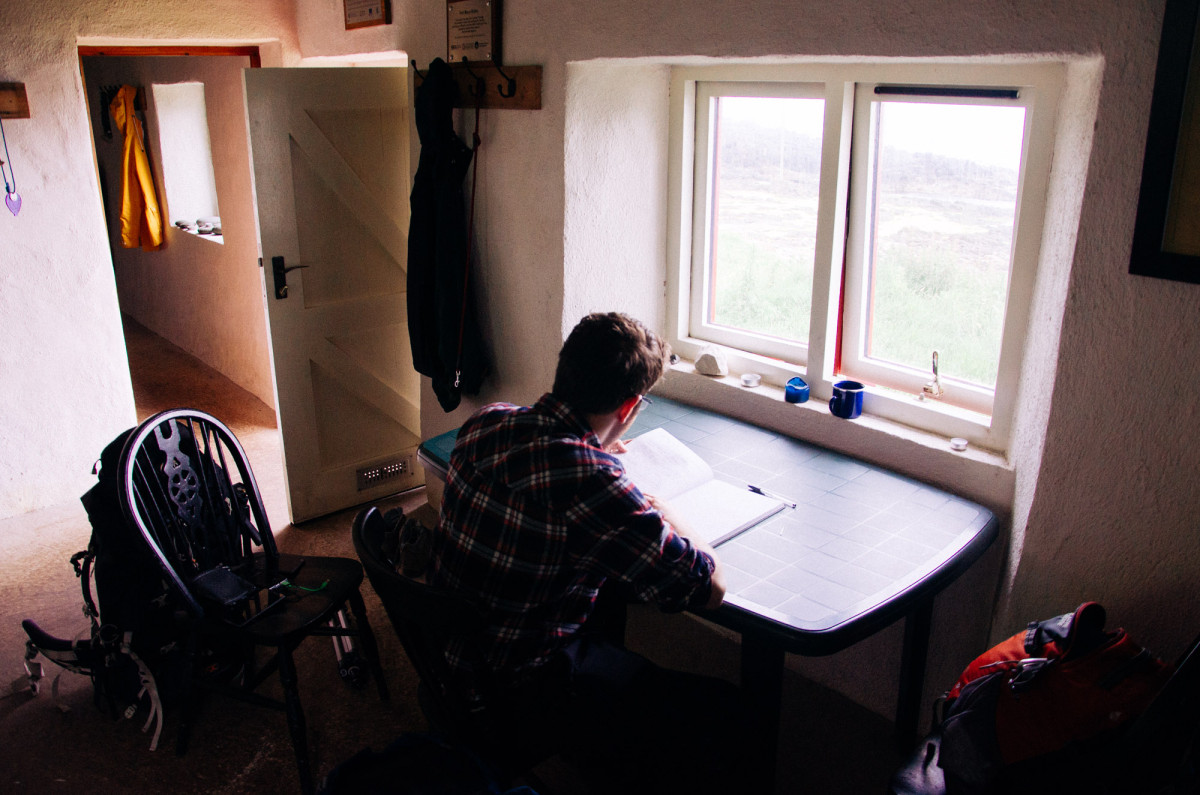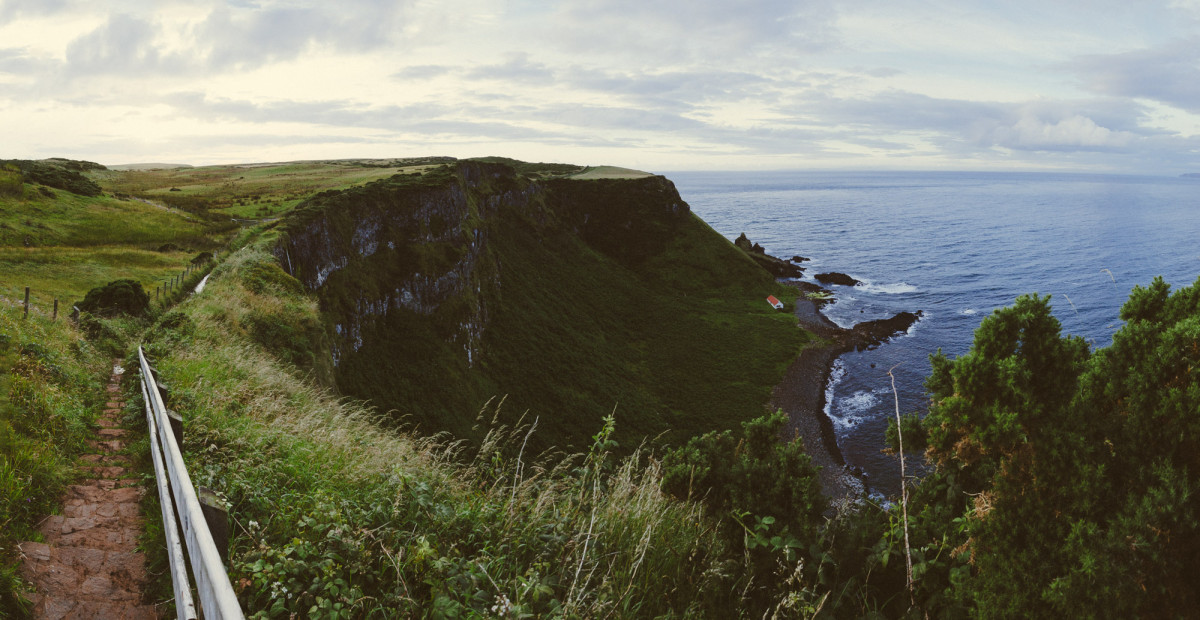Having previously passed it before while walking the Causeway Way, Port Moon Bothy always stood out to me as somewhere that would be a great place to stay a night. Eventually with some time freed up, and a little planning, Ed, Chris and I booked the bothy and made our way towards the North Coast.
Parking at the carpark at Dunseverick Castle, we loaded our rucksacks filled with food for the night onto our backs and set off along the cliff top path that runs along the North coast of Ireland. As far as walking paths go, it is hard to find a better path than this; amazing views, easy walking and relatively close to local villages, makes this one of my favourites.
We were glad that the path was easy to walk on and that there wasn’t far to travel to get to the bothy, as we had brought plenty of food and comforts – something a little different from the usual wild camping kit list.
For a very pleasant change, the weather had cleared and we saw the rare blue summer skies that always seem to elude us on our walks and camps. The weather in previous days had been nothing short of autumnal, with winds and rains doing their best to rid us of the little summer we’ve already had.Walking the Causeway Way that evening, we met very few people and enjoyed having the views and wildlife all to ourselves. We spotted many seabirds on one side and a couple of rabbits on our other – a bit of change from the usual hillside sheep we’re accustomed to seeing.
Eventually, after only twenty minutes walking, we arrived at the location where the path to the Port Moon Bothy seperates from the Causeway Way. A short but steep zig-zagging path then led us down the sloping cliff side to the sea and to the bothy.Unpacking our food and other supplies, we set up our beds for the night and had a look around the scenic location. It was then that a couple of us left the bothy to head back to the carpark – we had more supplies to bring down! We had brought a couple of bags of turf, sticks and some candles to stock the bothy with, but unfortunately for us, this didn’t all fit in our rucksacks the first time around!
Walking back up the zig-zagging path and along the cliff tops was not a hassle – it felt only right to carry some extra weight in order to restock what we might burn later that night. We also found out that our 80 litre rucksacks are a perfect size to fit a large bag of turf in!
Returning from our second journey just in time to watch the sunset, we started the fire and our gas stoves to get dinner on the go. For dinner that night, Ed cooked us some beautiful steaks which we enjoyed along with some port, cheese and crackers afterwards – who says you have to skimp on food?
We talked all night about how much of a great location Port Moon was, and how the bothy made such an excellent shelter for walkers and canoeists alike, as they explore the coastline. The warmth of the burning stove and the soft candlelight were very welcome changes from the modern day central heating and cold light from screens. The next morning we awoke to the smell of sea air and turf embers after a resting nights sleep. I can’t fault the bothy for sleeping in – there were no draughts, and it felt just like sleeping in a normal room, only in a wilder location. The addition of a raised sleeping platform to lift you off the cold ground is a really nice touch, and it could easily sleep 6 on the platform alone.After waking, we soon got breakfast on the go. Ed was testing out a new piece of cookware – the MSR XGK multifuel stove – and while I can’t comment on how it performs just yet (you’ll have to read our review if you want to find that out),I can say that the sausages and potato bread it cooked up were very tasty indeed!
While sipping our morning coffee, we took a closer look at the maps and photographs on the walls. The above photograph shows the port in use by fishermen.The map below details a spring and a proposed harbour for Port Moon, with the planned harbour being shown in red. The annotations on the map speak of a viaduct railway and “tracks for two steamers”; wouldn’t it be interesting to see what it would have looked like when built?
I took a stroll along the shore and tried to find the spring, but with little luck. It was around this time the rain started to come on; time outdoors camping and hiking has taught me that you never get dry weather the whole time!We took time to shelter in the bothy and sign the guest book, while waiting for the rain to ease. It was very enjoyable to read everyone’s comments and stories about their stay; descriptions ranging from wild and windy nights, to the tales of watching shooting stars in the height of summer. Reading each one made you feel a closer connection to the previous guests, who had shared nights here as we had.
Thankfully the rain did stop and we took this opportunity to tidy up our equipment, give everything a good clean, brush the floors and bag our rubbish to take home with us. It was then back upwards again along the zig-zagging path, stopping momentarily now and then to look back at the red tin roof that had sheltered us as we slept the night before.All in all it was a very enjoyable night, and made a nice change from our usual camping routine. The addition of having a roof over our heads, while still being close to nature, was a very pleasant experience and something we hope to do again.
We definitely recommend giving it a go, the bothy is a great building in a beautiful location. It is managed and maintained by the Causeway Coast Kayak Association – further information about bookings can be found on their webpage.

